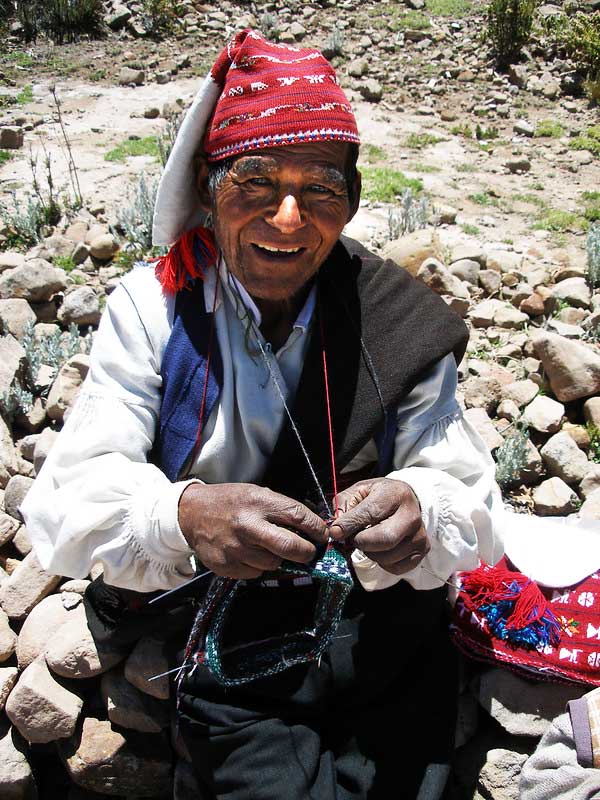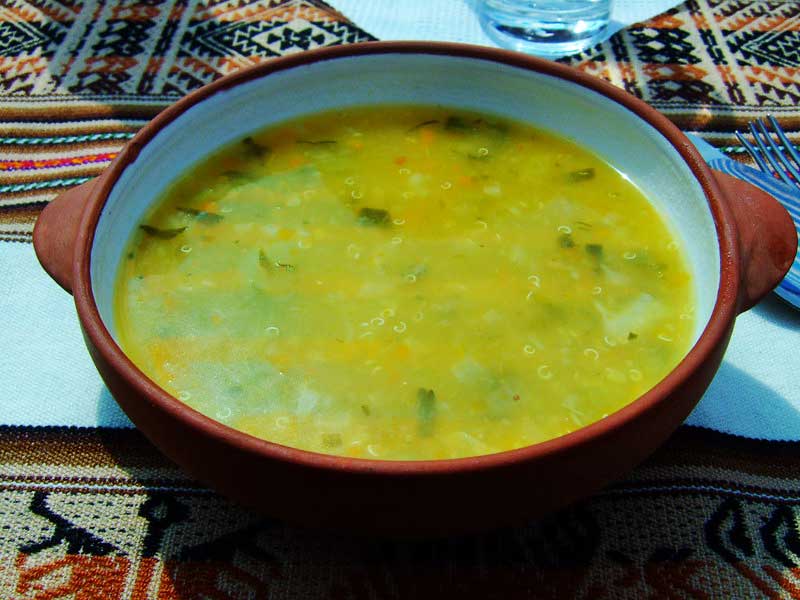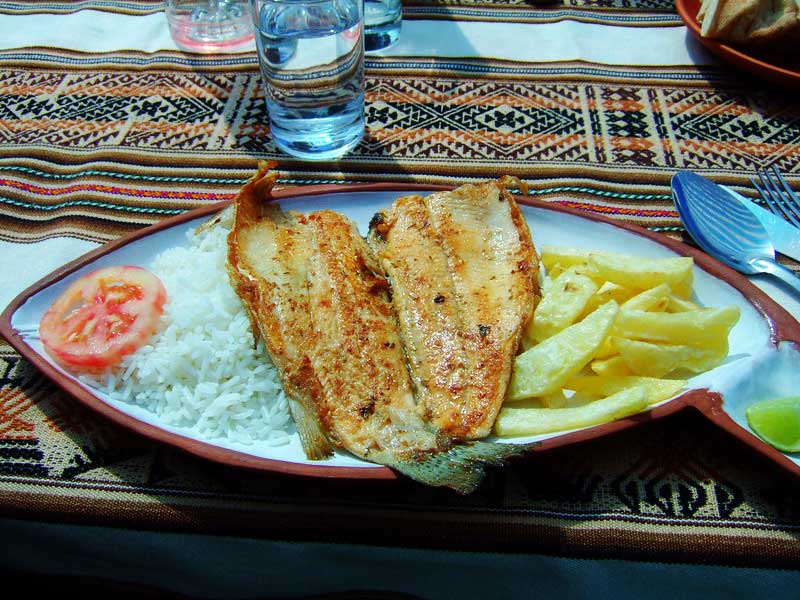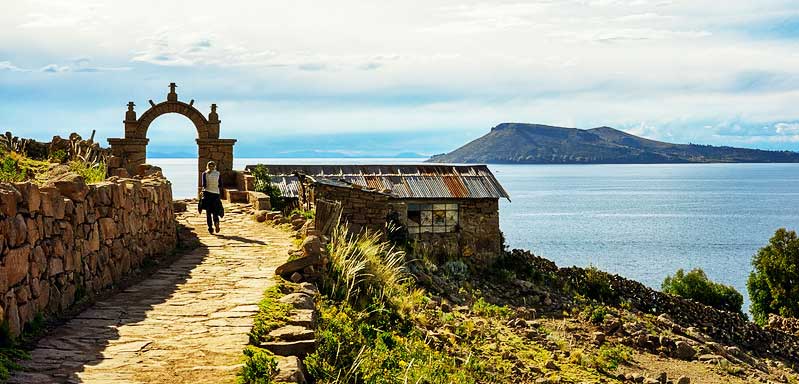Taquile Island, known as “Isla Taquile” in Spanish, is a hidden gem nestled in the heart of Lake Titicaca in Peru. This enchanting island has captivated visitors with its rich history, vibrant culture, and breathtaking landscapes. In this comprehensive guide, we will delve into the mysteries of Taquile Island, exploring its geographical and historical significance, its unique social structure, traditional clothing and weaving, gastronomy, must-visit landmarks, sustainable tourism initiatives, and essential travel tips. Get ready to embark on a journey of discovery and immerse yourself in the beauty and authenticity of Taquile Island.
Introduction to Taquile Island
Taquile Island is located in Lake Titicaca, the highest navigable lake in the world, situated at an altitude of 3,950 meters above sea level. Its pristine beauty and isolation have preserved its rich cultural heritage, making it a UNESCO World Heritage site. The island is inhabited by the Quechua-speaking Taquileños, who have meticulously preserved their traditions and customs for centuries. As you step foot on the island, you will be greeted by its tranquil atmosphere and breathtaking panoramic views of the lake.
Geographical and Historical Overview of Taquile Island
Taquile Island spans approximately 5.5 square kilometers and is made up of a series of terraced hills and fertile valleys. The island’s geography has shaped its history, as its isolation allowed the Taquileños to develop their unique culture and customs without external influences. The island was once a sacred site for the Incas, and evidence of their presence can still be seen in the ancient ruins scattered across the island.
The island’s history is intertwined with the Spanish colonization of Peru. The Taquileños resisted Spanish rule and managed to maintain their autonomy throughout the colonial period. Today, the island serves as a living testament to their resilience and determination to preserve their way of life.
The Cultural Significance of Taquile Island
Taquile Island is renowned for its vibrant cultural traditions, which have been recognized by UNESCO as Intangible Cultural Heritage of Humanity. The island’s culture is deeply rooted in the principles of community, cooperation, and mutual support. The Taquileños practice a communal way of life, where resources are shared, and decisions are made collectively.
One of the most striking aspects of Taquile’s culture is its traditional clothing. The Taquileños are known for their intricately woven textiles, which serve as a form of cultural expression. The textiles depict symbolic motifs and patterns that convey stories and traditions passed down through generations. Each piece of clothing is meticulously crafted using ancient techniques and natural dyes, making them true works of art.
Traditional Clothing and Weaving on Taquile Island
The art of weaving holds a special place in Taquile’s culture. This ancient craft is passed down from generation to generation, with men being primarily responsible for weaving while women focus on spinning the wool. The textiles produced on Taquile Island are world-renowned for their quality and craftsmanship.
The traditional clothing worn by the Taquileños is a reflection of their cultural identity. Men wear intricately woven chumpis (belts) and knitted chullos (hats) that signify their marital status, social status, and even their political affiliation. Women wear brightly colored polleras (skirts) adorned with intricate embroidery, showcasing their skill and creativity. The clothing not only serves as a form of self-expression but also plays a crucial role in preserving their cultural heritage.

Taquile Island’s Unique Social Structure and Governance
Taquile Island is governed by a unique social structure that revolves around the principles of community and collective decision-making. The island is divided into smaller communities known as ayllus, each with its own leader and communal responsibilities. The Taquileños practice a system of reciprocity, where labor and resources are shared among community members.
The island’s governance is based on a system of traditional authorities known as the “Pachamama” and “Curaca.” The Pachamama represents the spiritual and natural world, while the Curaca acts as a political and social leader. These authorities work together to ensure the well-being of the community and the preservation of their cultural heritage.
Exploring the Gastronomy of Taquile Island
A visit to Taquile Island is incomplete without indulging in its unique gastronomy. The island’s cuisine is a reflection of its natural resources and the ingenuity of its people. Quinoa, potatoes, and fish from Lake Titicaca are staples in Taquile’s traditional dishes.

One of the must-try delicacies is “trout a la Taquileña,” where fresh trout is cooked with herbs and served with potatoes and quinoa. The island is also known for its delicious soups, such as “chuño colado,” a hearty soup made with freeze-dried potatoes, and “sopa de quinua,” a nutritious soup made with quinoa and vegetables. Every meal on Taquile Island is a celebration of the island’s bountiful resources and the culinary expertise of its people.

Must-Visit Landmarks and Attractions on Taquile Island
Taquile Island is a treasure trove of natural and cultural wonders. As you explore the island, you will encounter ancient archaeological sites, picturesque landscapes, and breathtaking viewpoints. One of the most significant landmarks is the “Pachamama” and “Curaca” ceremonial center, where rituals and festivities take place.
For nature enthusiasts, a hike to the island’s highest peak, known as “Cerro de la Cruz,” offers panoramic views of Lake Titicaca and the surrounding mountains. The island’s pristine beaches, such as Playa Chiquini, are perfect for relaxation and taking in the beauty of the lake.
Sustainable Tourism Initiatives on Taquile Island
Taquile Island has embraced sustainable tourism practices to preserve its natural and cultural heritage. The island has implemented community-based tourism initiatives, where visitors can engage with the local community, learn about their traditions, and support their economic development.
The Taquileños have also adopted sustainable farming practices, promoting organic agriculture and preserving the island’s biodiversity. Additionally, efforts have been made to minimize the impact of tourism on the island, such as limiting the number of visitors and encouraging responsible behavior.
How to Get to Taquile Island and Travel Tips
To reach Taquile Island, you can take a boat from the city of Puno, which is the gateway to Lake Titicaca. The titicaca tour ride offers stunning views of the lake and takes approximately three hours. It is advisable to dress in layers and carry sunscreen and a hat, as the sun can be intense at high altitudes.
When visiting Taquile Island, it is important to respect the local customs and traditions. The Taquileños are known for their warm hospitality, and it is customary to greet them with a handshake and a smile. It is also recommended to bring cash, as there are no ATMs on the island.
Conclusion: Embracing the Beauty and Authenticity of Taquile Island
Taquile Island is a destination that will transport you to a world untouched by time. Its rich history, vibrant culture, and breathtaking landscapes make it a truly unique place to explore. Whether you are fascinated by ancient traditions, captivated by stunning vistas, or simply seeking a deeper connection with nature, Taquile Island has something for everyone. Embrace the beauty and authenticity of this enchanting island and create memories that will last a lifetime.
CTA: Plan your lake titicaca tour and experience the magic of this hidden gem. Travel with a spirit of adventure and an open heart to immerse yourself in the rich history and cultural traditions of Taquile Island. Don’t miss out on this once-in-a-lifetime opportunity to explore one of Peru’s most captivating destinations. Book your trip today!



Comments